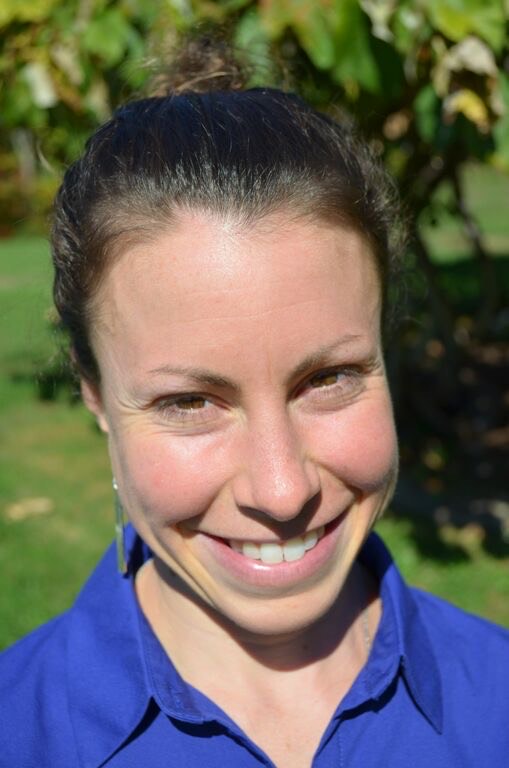Core workout for beginners: Try these six moves at home
What is the best core workout for beginners? A physical therapist shares tips and technique advice


In need of a simple core workout for beginners? Whether you're just getting started on your fitness journey or returning to exercise after extended time off, it can be daunting to know where to start.
You don't need need to jump straight into buying the best abs roller for carving a leaner pack or a 30-day abs challenge. Instead, core exercises for beginners are approachable – even if you’ve been inactive for a long time – and develop strength in the muscles that serve as your foundation for other exercises.
While there are numerous approaches to building your fitness, one of the best places to begin is with core exercises. And why are core muscles so important? Because they help build a strong foundation on which to build upon, which, in turn, will improve your technique, progress your fitness, and help you avoid the likelihood of injury.
While there are plenty of ways you can learn how to build a stronger core, we spoke to Dr Dave Candy, a specialist in orthopedic physical therapy and the owner of More 4 Life PT, for the best core workout for beginners.
With over 14 years of experience, Dr. Dave Candy is a board-certified orthopaedic physical therapist. He specializes in supporting women over 40 to ease chronic pain without the need for surgery. Dr. Dave Candy has carried out extensive studies into why we feel pain in our bodies and the science behind it. He is also the best-selling author of his book covering chronic pain.
Why is core strength important?
According to Candy, a strong core is important because these muscles (abdominal muscles, lower back muscle, hip muscles, and pelvic floor muscles) work together to stabilize your spine and trunk, to provide a solid anchor for your limbs.
“When you move your arms or legs, they need to have a stable base to move from,” he says. “Otherwise, you lose power when doing activities like running, jumping, hitting a tennis ball, or even everyday activities like squatting or climbing stairs.”
However, Candy says 'core strength' per se is overrated in many cases. “From day to day, we only use about 20% of our maximum strength in everyday movements,” he says. “It's more important to have ‘core control’ to be able to activate the right core muscles, at the right time, in the right amounts in order to counterbalance the movement of your arms or legs.”
Start your week with achievable workout ideas, health tips and wellbeing advice in your inbox.
What are the best core exercises for beginners?
Candy says the best core exercises are ones where you're using your core in the manner that you use it in everyday activities.
“Exercises like crunches and back extensions are OK, but they don't accurately simulate how you use your core muscles in real life,” he says. “Isometric core exercises, such as planks, leg raises, or leg-lowering exercises, where you hold your trunk stable and then move your limbs, more accurately reflect how you use your core muscles in real life. Additionally, full-body exercises, like squats and deadlifts, are great core exercises and very functional since they represent movements that you do in real life.”
You can get a good core workout through different types of exercise – grabbing one of the best yoga mats and practicing your boat pose will help you get stronger. But if you want a routine that's really focused on the core, try doing the below.
Core Workout Routine for Beginners
Candy recommends that beginners perform the following core exercise program at least 3 days a week. Start with one set of each exercise and work up to 2-3 sets.
Bodyweight squats
We often think of core exercises for beginners solely involving ab exercises done lying on the floor, but some of the best core exercises for beginners target numerous muscle groups and mimic everyday movement patterns rather than isolated abdominal motions.
A basic squat is a perfect example. Candy says squats require you to activate your abdominal and back muscles at the same time to stabilize your spine, while also strengthening your quadriceps and gluteal muscles.
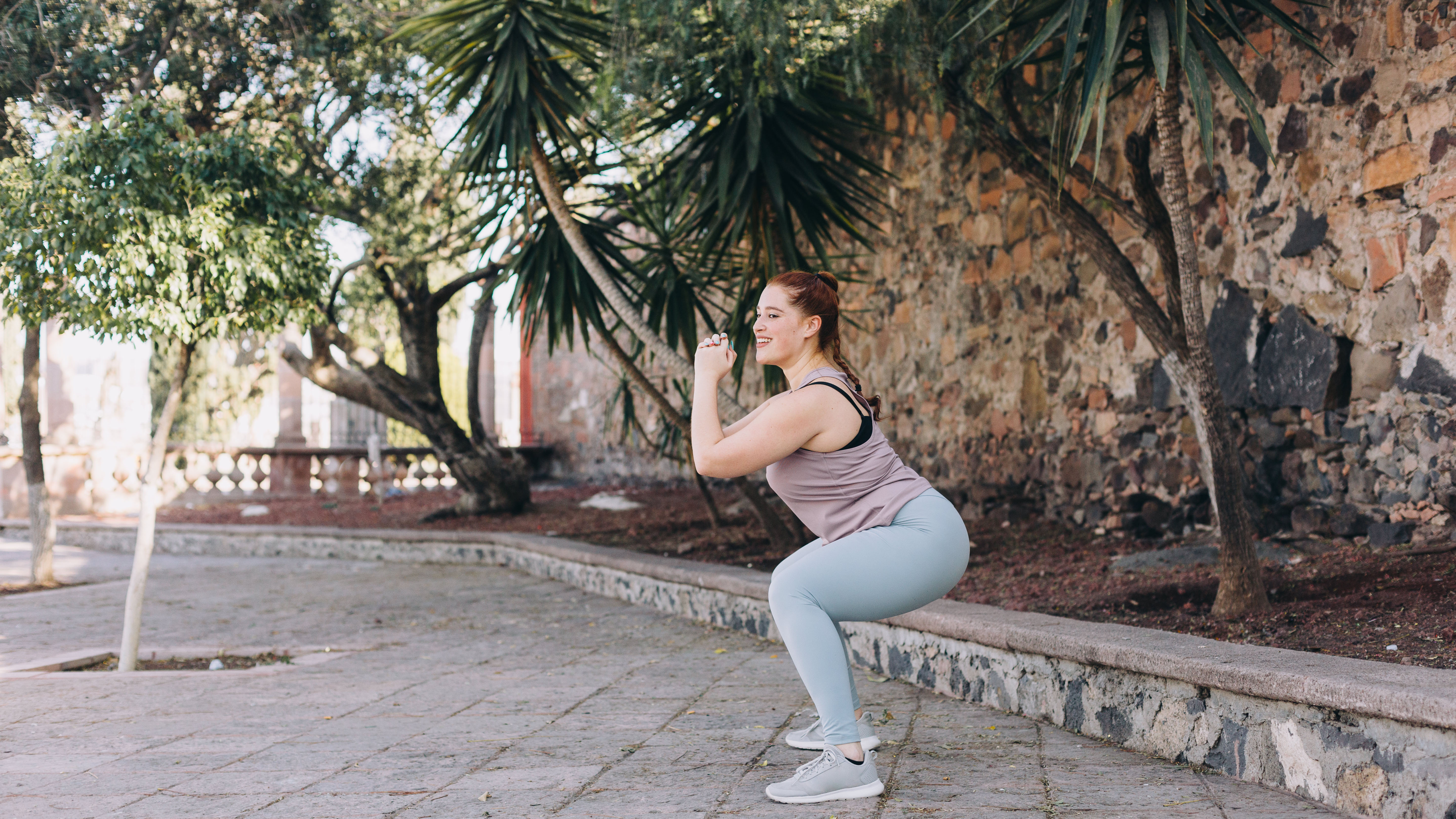
- Stand with your feet slightly wider than shoulder-width apart, with your toes pointing forward, your core engaged, and your chest up and proud.
- Inhale, bending your knees and pushing your hips backward as if reaching your butt back to sit in a chair and keeping your back straight and chest up. Your arms can come forward in front of your body to act as a counterweight. Keep your abs tight and engaged and your lower back flat and not rounded.
- Lower your body until your thighs are parallel to the floor and your knees are flexed to 90 degrees. Lean your trunk forward slightly as you do this in order to keep your spine flat.
- Exhale, pressing through your heels to return to the starting position.
Plank
A plank is an isometric exercise (static hold) that requires you to engage your abdominal and gluteal muscles simultaneously.
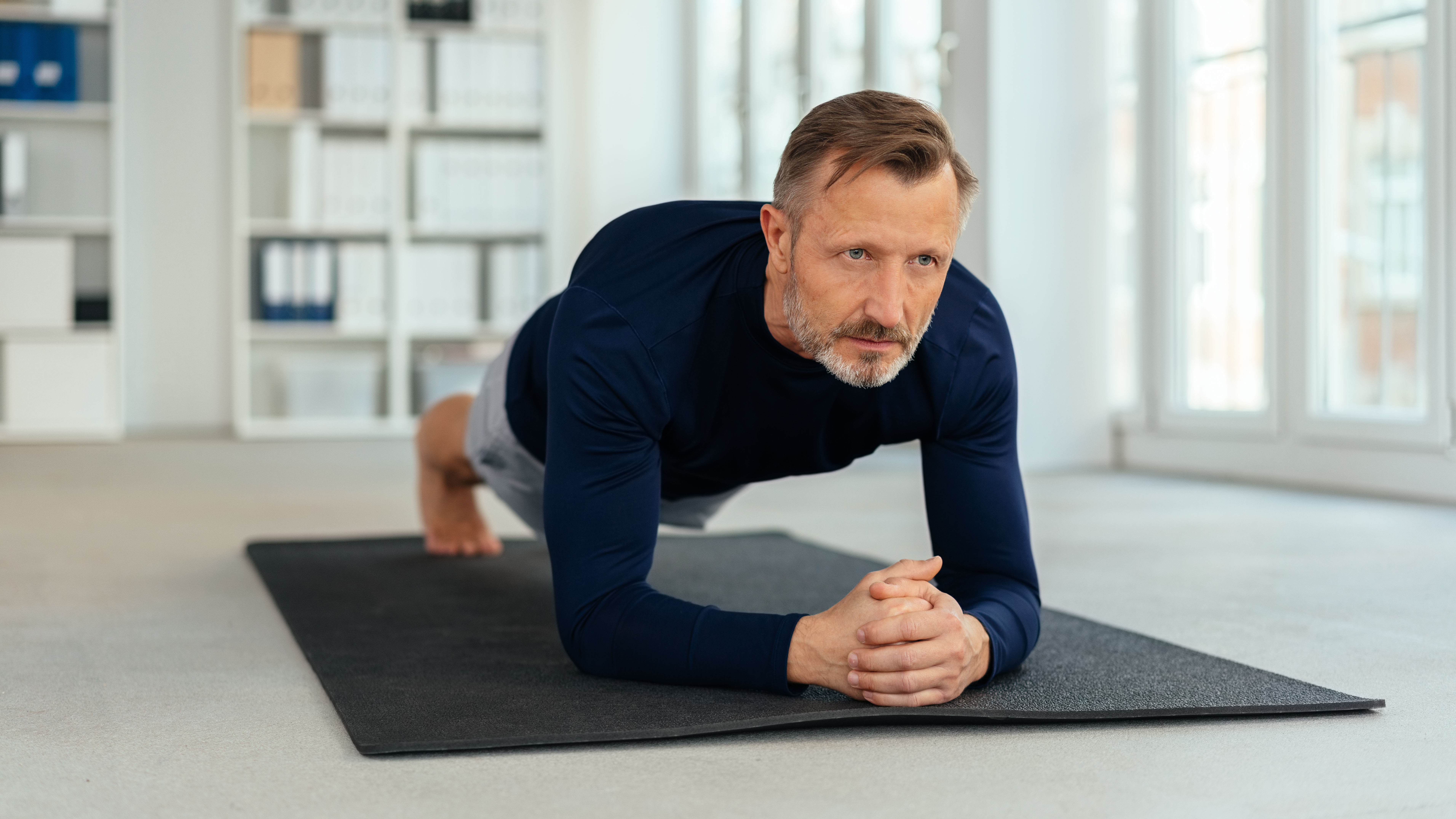
- Get on all fours. Bend your elbows 90 degrees to support your weight on your forearms. Your elbows should be directly underneath your shoulders.
- Step both legs back, so that only your forearms and toes are touching the floor. Your feet should be hip-width apart.
- Contract your glutes and engage your abs by drawing your belly button up to your spine. Your body should be in a straight line from your head to your heels. Breathe slowly and evenly.
- Hold for 15-30 seconds, gradually progressing the length of your hold as you get stronger.
To maximize the effectiveness of this exercise, keep your trunk straight from shoulders to hips with your lower back in a neutral position while tightening your abdominal and glute muscles.
“Common mistakes include letting the hips sag too much, or sticking your bottom up too high in the air,” says Candy, who stresses that you need to keep your body in a straight line from your shoulders to your heels while tightening your abs and glutes.
If your hip flexors are tight, you may have to "tent" your hips up slightly in order to keep your lower back in a neutral position.
Supine marches
Leg-lowering exercises involve lying on your back with your lower back flat against the ground while lowering one or both legs.
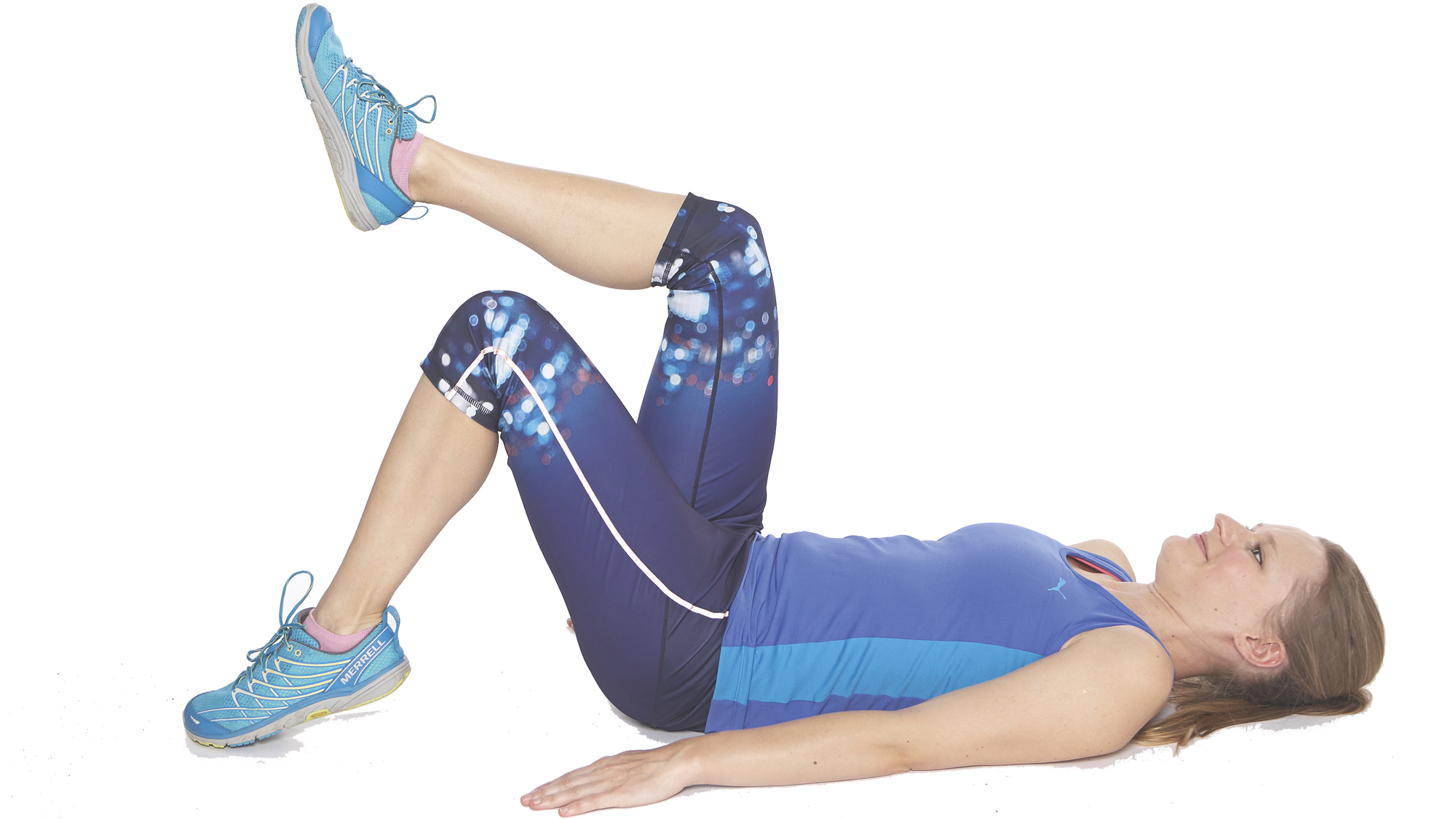
- Lie on your back with your lower back flat against the ground and your abdominal muscles engaged.
- Lift both legs to a 90 degree angle at the hip and knee so that your legs are up in the air with your shins parallel to the floor.
- Lower one leg at a time, keeping your lower back pressed into the floor; do not let your lower back arch off the ground.
- Keep slowly lowering each leg, alternating one at a time until you do 10 reps per side.
“If you are able to successfully lower each leg 10 times, you can progress to lowering both legs at the same time while still keeping your lower back flat,” says Candy. “If that becomes too easy, you can further progress the exercise by straightening your knees and lowering your legs with your knees straight.”
No matter which version you do, Candy says it’s important to keep your abdominal muscles contracted and your back flat against the ground at all times in order to maximize the effectiveness of this core exercise for beginners.
Standing marches
This is a good core exercise for beginners because it requires you to use your abdominal muscles to stabilize your spine while counteracting the pull of your hip flexor muscles that you use to raise your leg. It’s a beginner core exercise that can prepare you for hanging knee raises or vertical knee raises using exercise equipment.
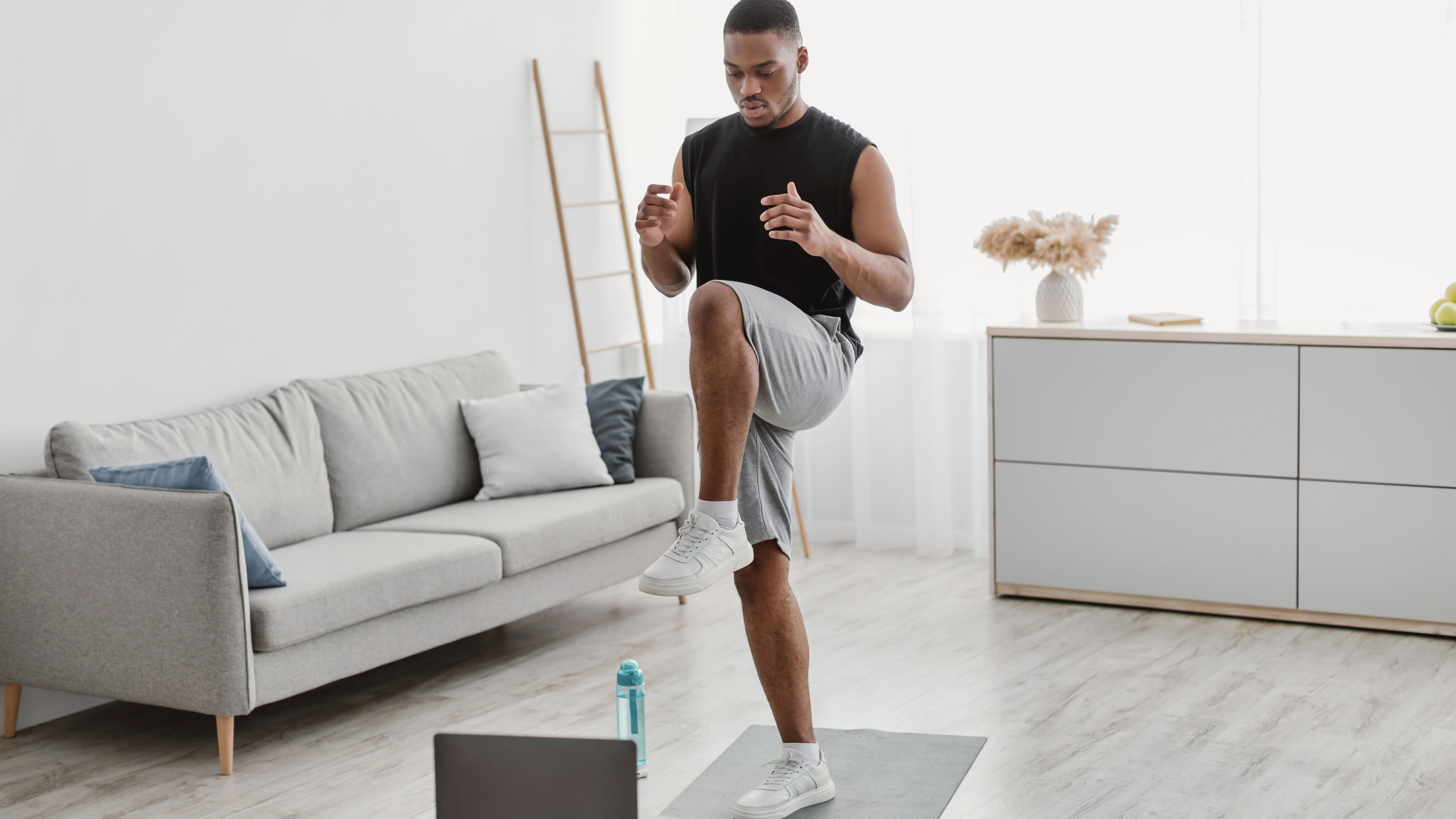
- Stand upright with good posture, shoulders back, and core engaged.
- Inhale, squeezing your abs to lift one knee up towards your chest as if marching in place.
- Move in a slow and controlled manner and ensure you’re using your core to stay balanced and keep your trunk upright.
- When your knee is as high as it can go, hold it up with your core muscles (not your hands) for 3-5 seconds and then slowly lower the leg back down.
- Alternate legs, completing 12 marches per side.
Deadlifts
Candy says that deadlifts are a great functional core exercise because you have to stabilize your spine while using your legs to lift a weight off the ground, which mimics many of the actual movements we do in everyday life.
Stand upright with your shins against a barbell on the ground. Beginners can also just use a light dumbbell in front of each foot.

- Engage your abs and glutes as you hinge at your hips to reach down and grab the barbell with your hands approximately shoulder-width apart, or a dumbbell in each hand. Keep your back straight.
- Sit your hips back as far as you can prior to lifting.
- As you lift the weight off of the ground, keep your abdominal muscles tight and squeeze your glutes.
- Push your hips forward and drag the bar up your shins until it reaches your waist. Your glutes and hamstrings should do most of the lifting, but your abs should be tight throughout.
- At the top of the movement (standing fully upright ), keep your abdominal muscles tight and don't lean back excessively.
- Hinge at the hips and sit your butt back to lower the weight back down.
- Complete 12 reps.
Bridges
Candy says that bridges are a fantastic core exercise for beginners because they help you work on using your abs to stabilize your spine, while simultaneously engaging your glutes.
“What makes this a good exercise is that it strengthens the glutes at an end-range position where your thighs are almost parallel with your trunk,” says Candy. “Since your knees are bent, bridges also stretch the rectus femoris, one of your quadriceps muscles.”
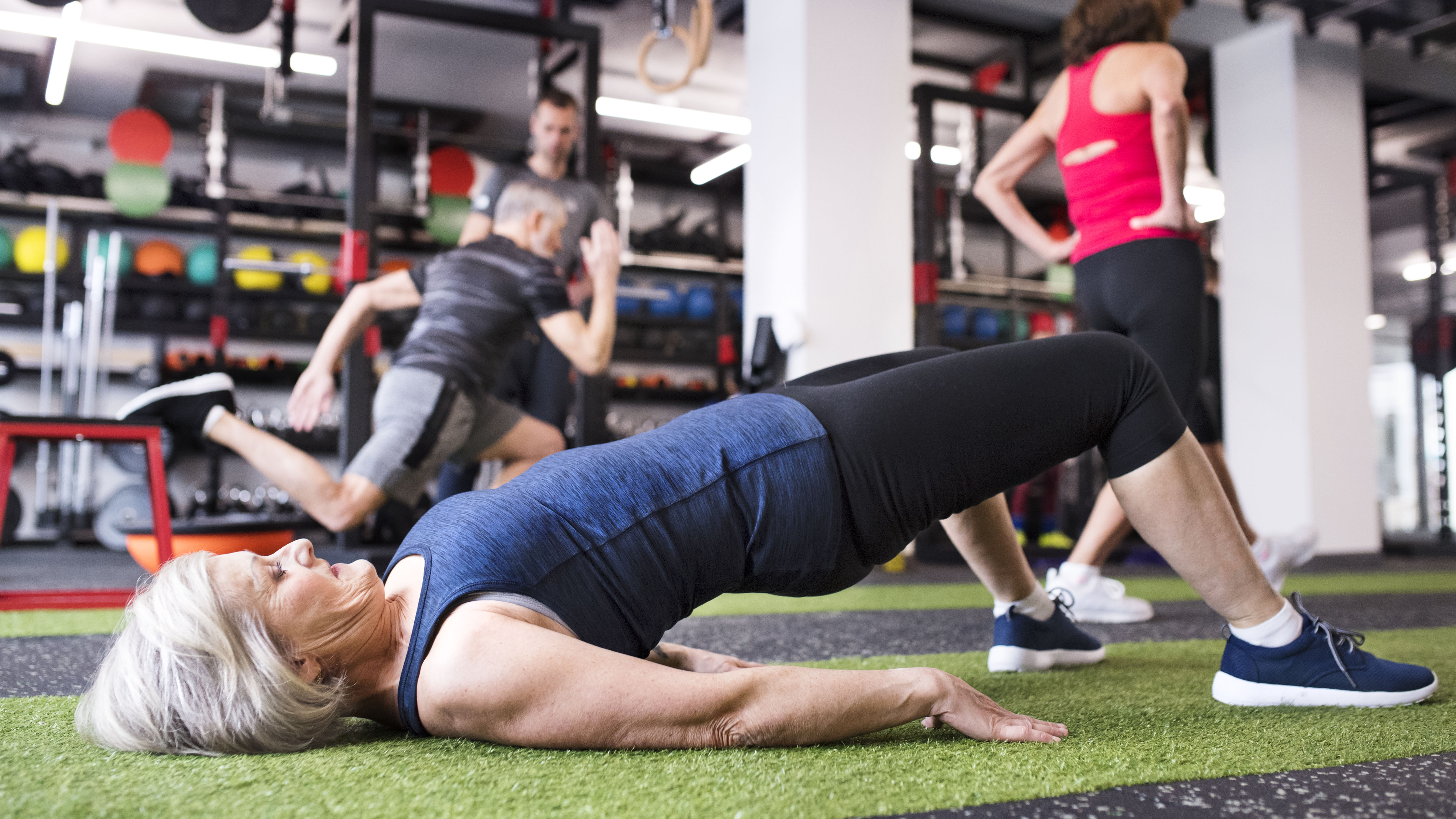
- Lie on your back with your knees bent and feet flat on the floor. Tighten your abdominal muscles to flatten your low back to the floor.
- Keep your abdominals tight and lift your hips up, being mindful to lift only as far as you can without allowing your back to arch. It's more important to keep your lower back flat than to lift your butt further off the ground.
- Squeeze your glutes and hold this raised position for a full breath and then slowly lower back down.
- Complete 12-15 reps.
Tips for core exercises for beginners
“One common theme in all these core exercises is that it's important to keep your abdominal muscles tight and your spine in a neutral position. Squeezing your glutes is another common theme in most of the exercises,” says Candy.
The abdominal muscles and glute muscles work together to stabilize the spine and provide a strong base for movements of your limbs, which is why the best functional core exercises tend to require synergistic involvement of these muscle groups.
According to Candy, “Most people have strong back extensor and hip flexor muscles and weak abdominal muscles and glutes, so the best core exercises are usually ones that focus on strengthening these muscle groups while holding your spine in a neutral position.”
Lastly, core strengthening work doesn’t have to be isolated to your core exercise program alone. “Core exercises can easily be incorporated into general exercises, such as tightening your core muscles when doing dumbbell curls, squats, lunges, or deadlifts,” says Candy. “Doing overhead shoulder presses keeping your abdominal muscles tight and avoiding arching your back is also a great core exercise.”
Amber Sayer is a Fitness, Nutrition, and Wellness Writer and Editor, and contributes to several fitness, health, and running websites and publications. She holds two Masters Degrees—one in Exercise Science and one in Prosthetics and Orthotics. As a Certified Personal Trainer and running coach for 12 years, Amber enjoys staying active and helping others do so as well. In her free time, Amber likes running, cycling, cooking, spending time outside, and tackling any type of puzzle.
